Brighten Your Smile with Skilled Dental Services Designed for Comfort
A radiant smile can boost confidence, improve your appearance, and even enhance your overall well-being. Achieving this begins with access to skilled dental services that prioritize both results and comfort. Modern dentistry has evolved to provide not just effective treatments, but also experiences that are gentle, stress-free, and tailored to individual needs.
Comprehensive Dental Care for Every Smile
Skilled dental services cover a wide spectrum of care, ensuring that your teeth and gums remain healthy while enhancing your smile. Whether you are seeking routine check-ups, preventive care, or cosmetic improvements, these services are designed to make each visit pleasant and efficient. A dentista Catania focuses on both aesthetics and functionality to deliver a confident, healthy smile.
Key services include:
- Preventive care: Regular cleanings, exams, and screenings to keep your smile healthy.
- Restorative treatments: Fillings, crowns, and bridges that restore function and aesthetics.
- Cosmetic dentistry: Teeth whitening, veneers, and smile makeovers to enhance your natural beauty.
- Orthodontics: Braces and aligners to correct alignment issues with comfort and precision.
- Advanced procedures: Root canals, implants, and gum treatments performed with minimal discomfort.
Comfort as a Priority
One of the main reasons people avoid dental care is anxiety or discomfort. Modern dental practices recognize this concern and have implemented techniques to ensure every patient feels at ease. From pain-free procedures to calming environments, comfort is central to the dental experience.
How comfort is ensured:
- Gentle techniques: Use of modern tools and methods to minimize discomfort.
- Sedation options: Safe and effective options for anxious or sensitive patients.
- Welcoming environment: Relaxing spaces with soothing decor and amenities.
- Personalized care: Tailored treatment plans to suit each individual’s needs and preferences.
The Benefits of a Confident Smile
Investing in skilled dental services is more than just a cosmetic choice; it is an investment in your health and confidence. A bright, healthy smile can positively impact personal relationships, professional opportunities, and overall self-esteem.
Advantages of a well-cared-for smile include:
- Enhanced self-confidence and personal presentation.
- Improved oral health and prevention of future issues.
- Long-lasting results that maintain both function and beauty.
- A positive first impression in social and professional settings.
Achieve Your Dream Smile Today
Maintaining a bright, healthy smile does not have to be stressful. With access to skilled dental services designed for comfort, patients can enjoy a seamless, pleasant experience while achieving the smile they have always wanted. By combining expert care with a focus on patient comfort, modern dentistry ensures that every visit is an opportunity to enhance your well-being and confidence.








